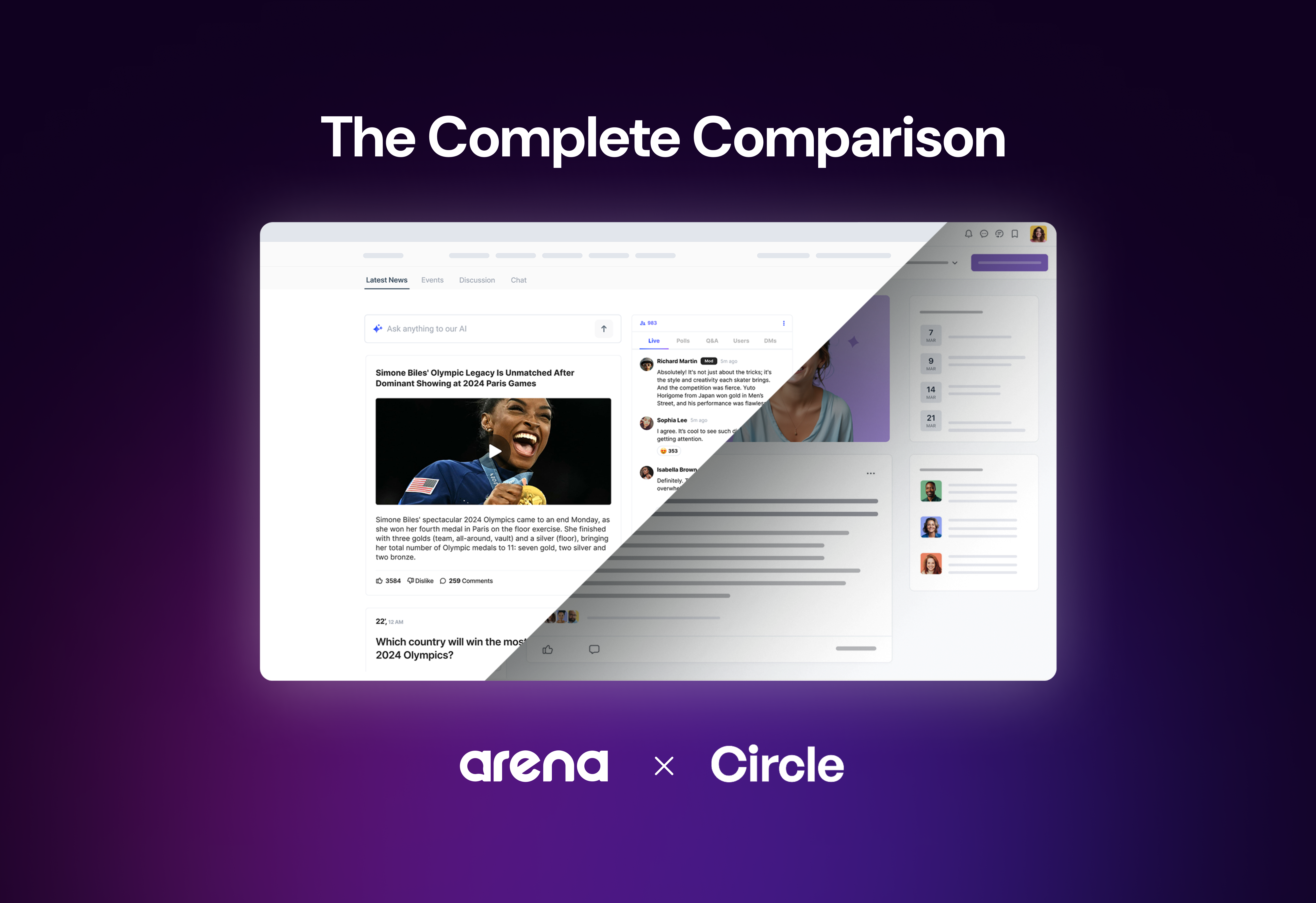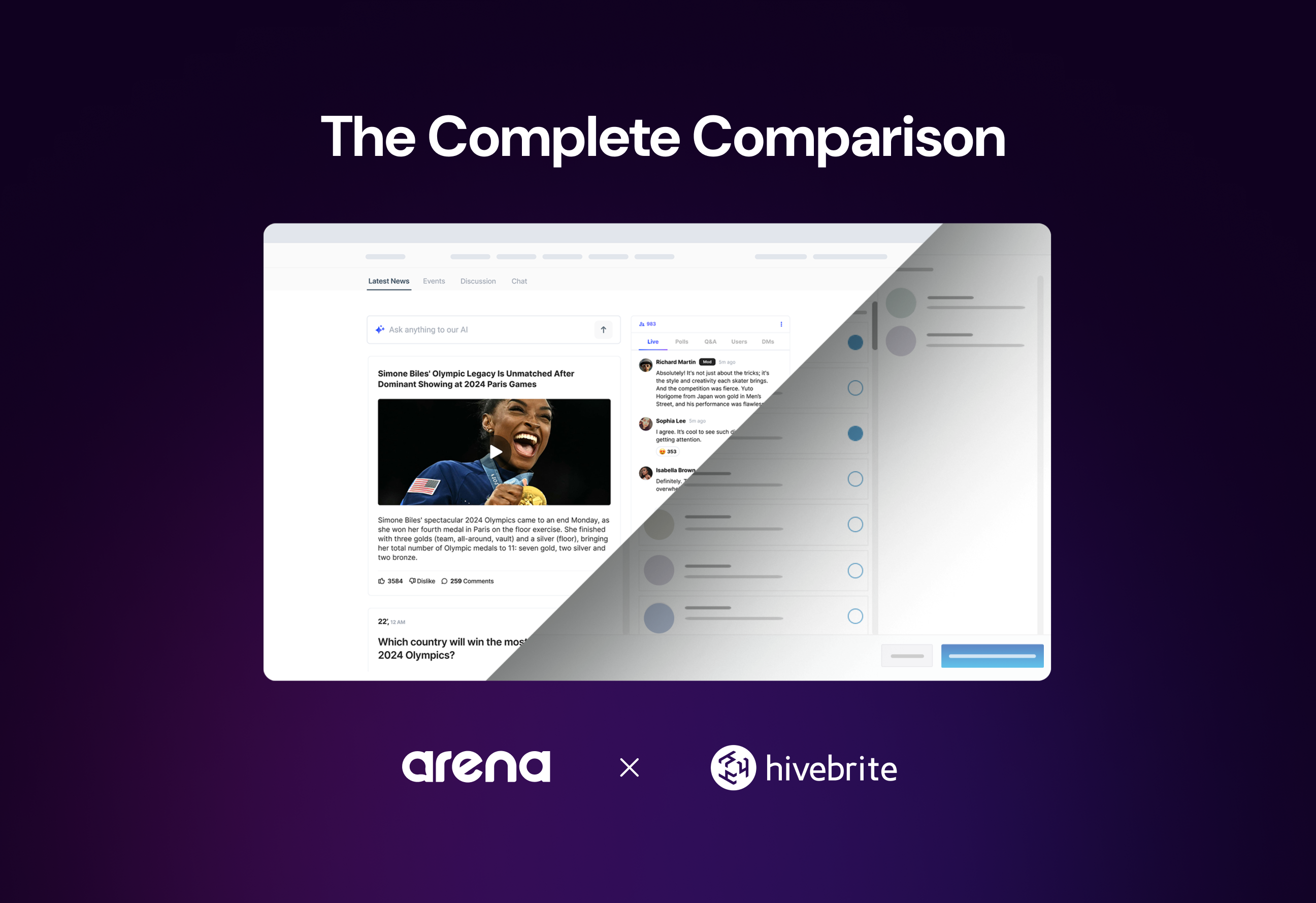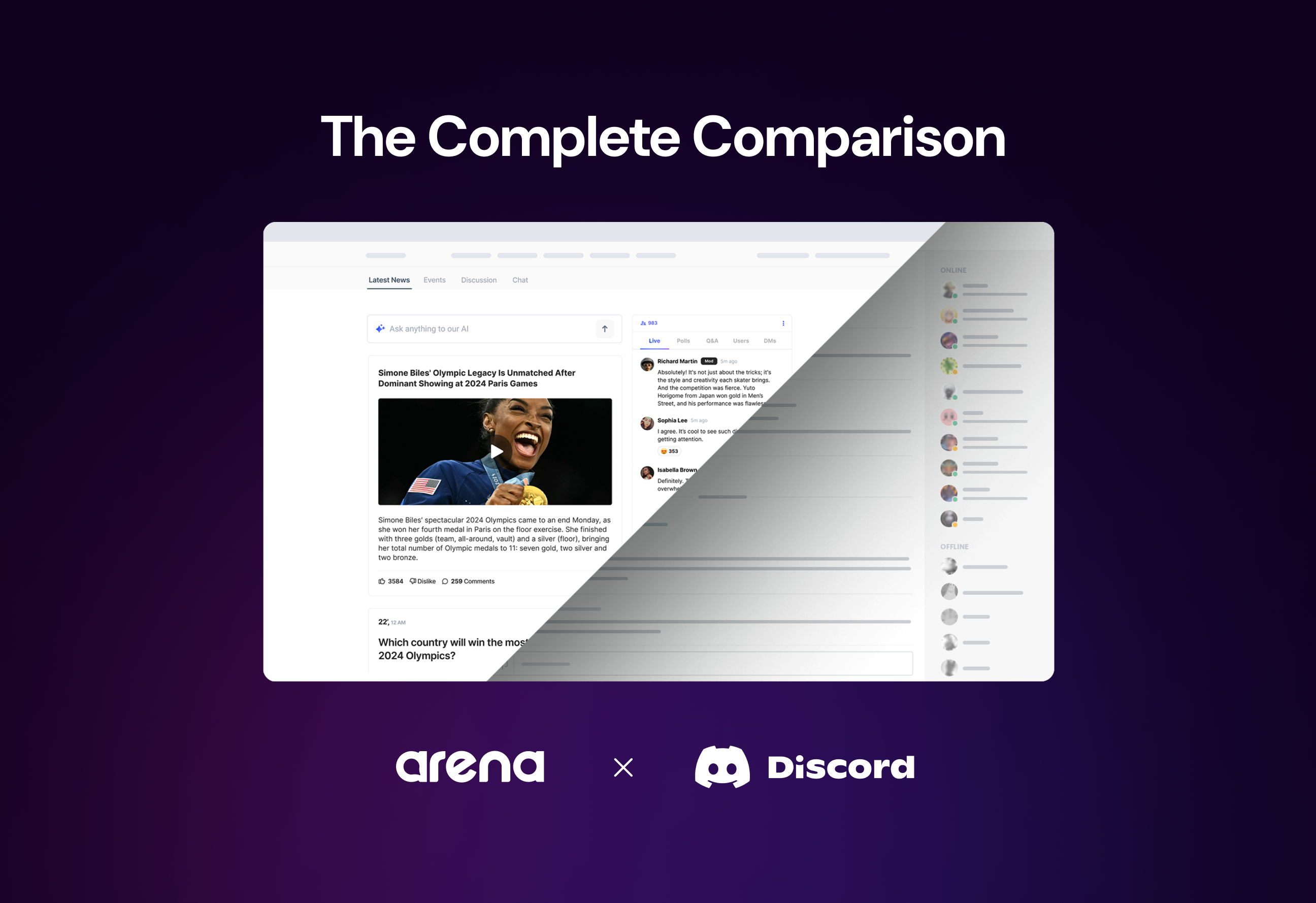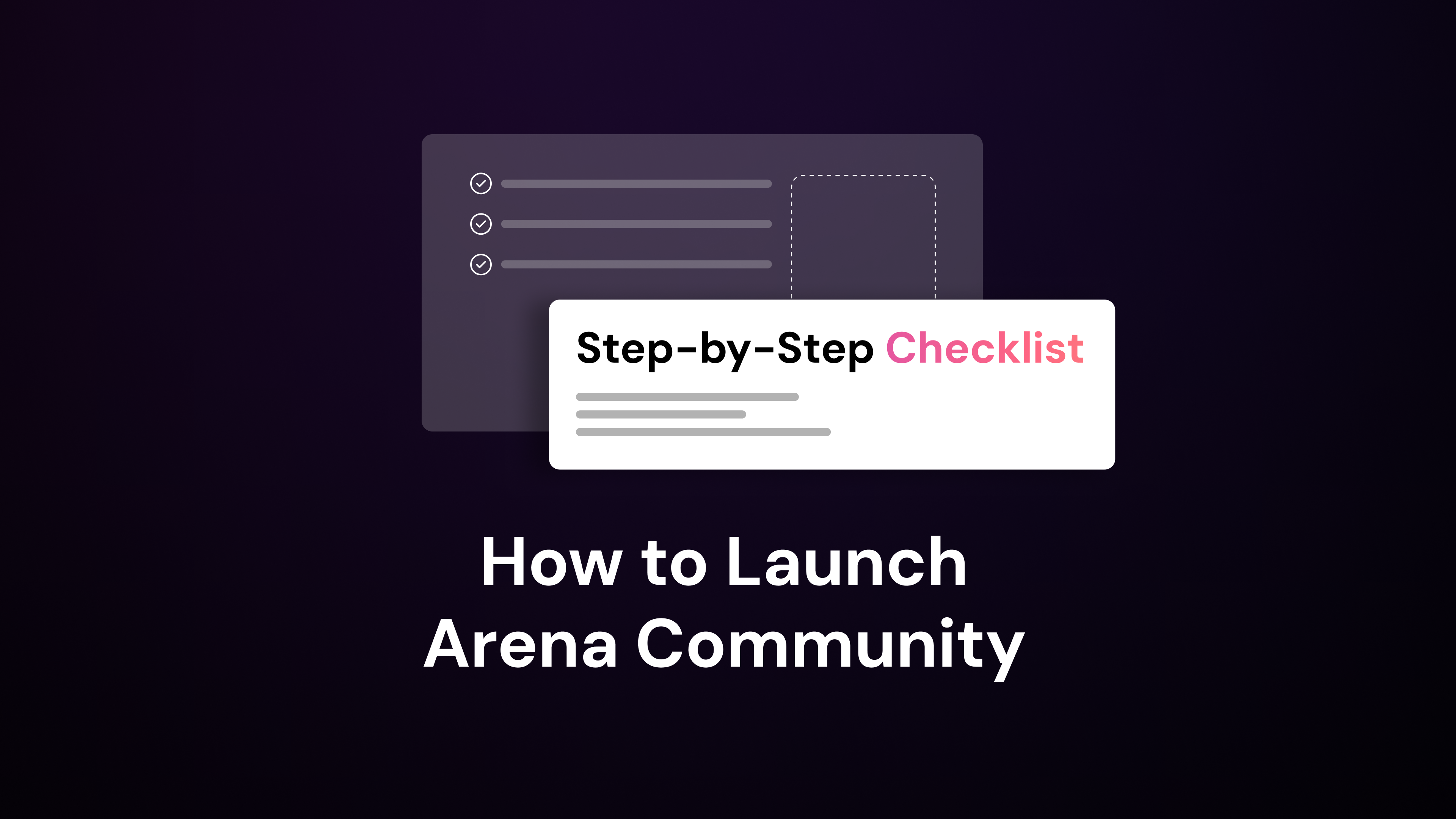Communities are rapidly becoming a focal point for brands and creators, as many are now shifting their efforts toward building independent platforms outside of social media. According to a recent study, 76% of consumers wish their favorite brands had a community. Besides straightening the bond between organizations, creators and brands with their communities, this shift is also fueled by increasing uncertainty on social media platforms, where algorithms and platform changes can dramatically impact audience reach and content visibility.
As brands look for alternatives, many are turning to community-focused platforms, and comparing options like Circle.So vs Arena Community. In this article, we will compare these two popular solutions, exploring their key features, pricing structures, and the types of communities they serve.
Overview: Circle.So vs Arena Community
What is Arena Community?
Arena Community is an all-in-one engagement platform, built to make it easier for you to bring your audience from social media to your website or app. The no-code platform allows brands, creators and organizations to create closer bonds with their audiences by increasing engagement and interaction.
Designed to bring various elements of community engagement into a cohesive platform, with features such as real-time group chat, a dynamic live blog where you can post multimedia content updates, interactive polls and Q&As, forum discussions and much more.
Besides giving you full control over your community with powerful moderation features, Arena Community comes with AI tools, such as Feed Search and Summary, that make it much easier for your fans to find what they are looking for.
Arena Community also helps you to increase your website monetization, by enabling you to optimize ad placements, adopt subscription models, partner with brands to create sponsored content and more.
What is Circle.So?
Circle is also a community-building platform that can also be integrated with existing sites. With features reminiscent of other cloud services such as Slack, Circle allows creators and brands to build community around their existing online presence by sharing content such as post and articles.
Circle is especially popular amongst creators that focus on online courses, coaching programs and online clubs. It is posible to create different areas for varying membership levels and help specific users network with each other.
Much like Arena Community, Circle has features like real-time chat, live events, social feed, forums and discussions. Social media integration, single sign-on and an AI content co-pilot are also some of the features that both solutions present.
What are the Main Differences Between Circle.So vs Arena Community?
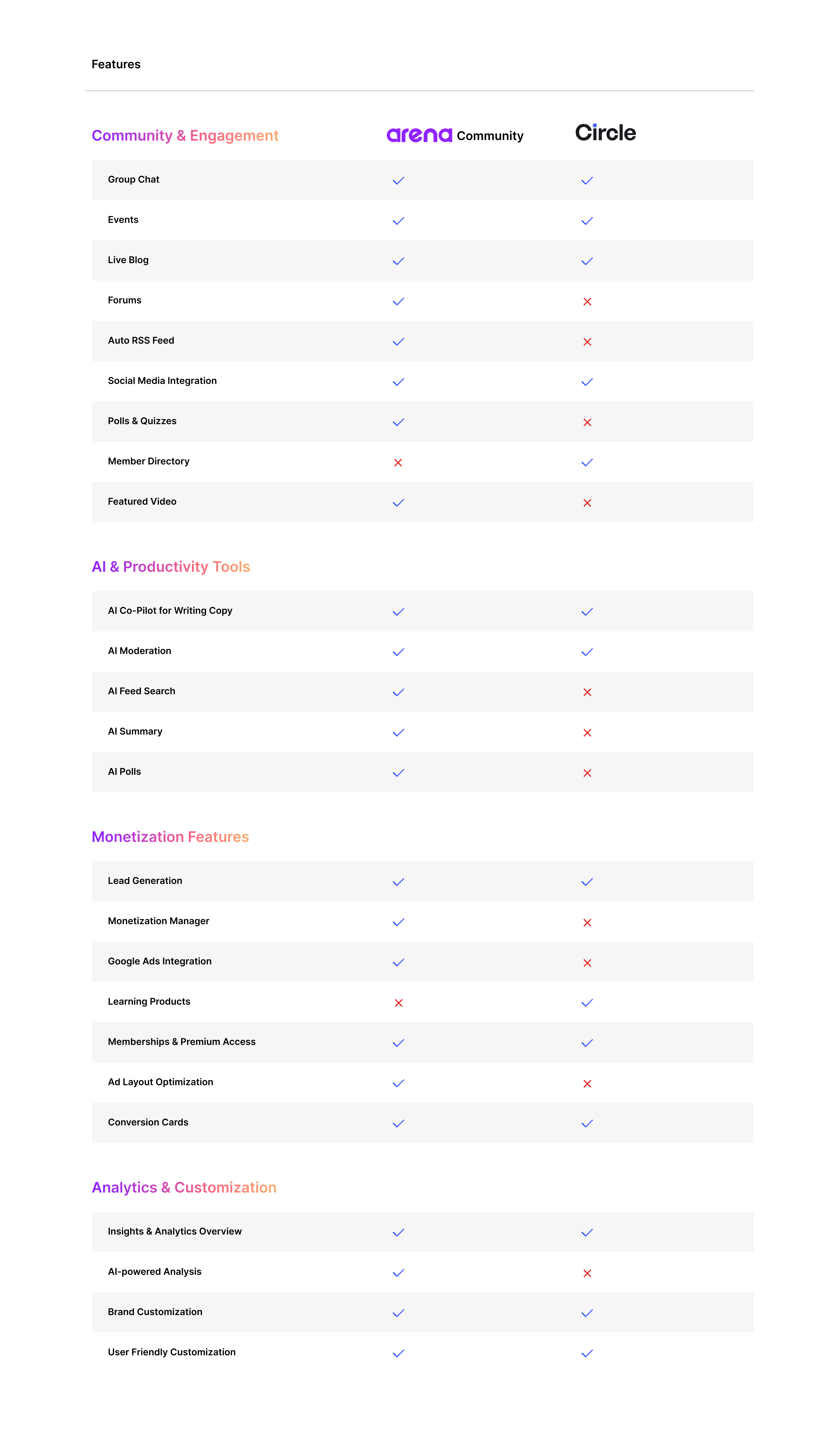
Pricing in Circle.So vs Arena Community
At first glance, Arena Community already presents more benefits than Circle when it comes to pricing: Arena’s platform counts with a free plan, perfect for individuals and small teams that wish to start their community-building efforts.
On the other hand, although Circle has a free 14-day trial, both the monthly and yearly basic plans start at $49/month. There are several factors to understand Circle’s pricing system:
All Circle.so plans come with transaction fees, and if you require add-ons, they come at an extra cost. Additionally, the Basic plan lacks integrations like Zapier and WordPress, and priority support is only available with the Enterprise plan, priced at $360 per month.
Circle Pricing
Circle.so offers three monthly billing plans:
- Basic ($49/month) – Ideal for starting a small community (up to 100 members). It includes a 4% transaction fee and basic email support but doesn’t offer integrations like WordPress or Zapier.
- Professional ($99/month) – Designed for mid-sized communities. It comes with a 1% transaction fee and basic email support. This plan offers more integrations but is limited to three admin users and lacks email white-labeling.
- Business ($219/month): This plan has all the features included in the Professional plans, as well as custom profile feeds, admin API, activity scores, and more.
- Enterprise ($399/month) – Suited for large communities. It features a 0.5% transaction fee, priority email support, email white-labeling, and allows up to 10 admin users.
Arena Community Pricing
When you break it down, Arena Community has much more affordable prices, both on the monthly and yearly plans.
Arena Community offers three annual monthly plans:
- Free: This plan is designed for individuals and small teams just starting their online communities. It comes with basic live engagement features, such as a live blog, group chat, and auto RSS feed.
- Starter ($49/month) – Ideal for communities of up to 200.000 monthly pageviews. It includes features such as Auto RSS Feed, Group Chat, Live Blog, Social Networks Content Stream, AI Summary, AI Polls, AI Search, AI Moderation, Q&As, Ads Monetization and much more.
- Professional ($249/month) – Designed for brands and creators with over 2 million monthly pageviews. It comes with everything from the Starter plan, plus UI Customization, Conversion Cards, Ads Revenue Share, AI Post Enhancement, Live Support from Arena’s team, and other benefits.
- Enterprise (Custom) – Suited for large communities, brands and creators. The Enterprise plan comes with everything from the aforementioned plans, plus Data Exportation, White Label, Full API Access, a dedicated Account Manager, and a Private Server, amongst other advantages.

To see Arena Community’s full pricing options, click here.
Which Platform is Best: Circle.So vs Arena Community
Both Arena Community and Circle.So offer good toolkits to help you build, grow and monetize your online community, but there are some key differences that you should consider when choosing one of the two.
First of all, Arena Community is more adaptable for all kinds of communities. Designed to serve various industries and customer profiles, Arena Community can be used by sports and entertainment brands, influencers and creators, e-learning initiatives, media and publishers, e-commerce, and much more.
While a robust platform, most of Circle’s features and functionalities were designed to tend to online course communities, coaching communities, membership communities and so on. This means that Circle is more adaptable for private and closed communities, that require memberships to join, which can be limiting, depending on your community’s purpose.
Circle.so charges a transaction fee on all plans, including the highest-tier option. Additionally, if you need extra admins, more spaces, or additional live-streaming hours, you’ll incur extra costs.
Arena Community’s open format allows brands to bring their audiences to their website effortlessly, while enjoying a complete set of engagement features that will leave your community coming back for more. There are no hidden fees, and almost all available features are included in every pricing plan.
If you want to explore all of Arena Community’s features in detail, take a look at our complete guide.
